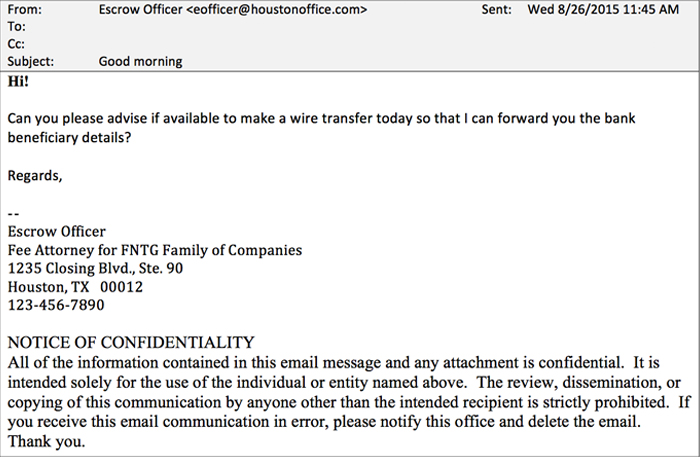|
Emelia Irish, from FNTG's Houston's accounting center, received an email purportedly from an escrow officer which looked similar to this:

Emelia immediately noticed some irregularities. First, the recipient in the To: field was blank. Second, the font seemed different throughout the message. The greeting of the message was bold and a different font than the body of the message. The font for the signature matched the greeting, but not the body of the email.
Emelia is familiar with the purported sender's tendencies and never recalled seeing "regards" as the valediction, so she reviewed previous emails. Sure enough, the sender always ended their emails with "Thanks" or "Thank You."
Emelia's next step was the best defense in protecting the Company against hackers; she picked up the phone and called the sender using a known phone number rather than the number in the body of the email.
The escrow officer confirmed the email did not come from him. Emelia alerted the escrow officer his email account might have been hacked and advised him to contact his IT department for confirmation. She deleted the email from the hacker and moved on to work on legitimate requests.
| |
| |
MORAL OF THE STORY
Pay attention! Anytime there are discrepancies in the font you should stop and double check the information being received. Be familiar with your colleagues' and customers' tendencies. If they change, take the time to call them at a known, trusted phone number to verify whether the email was sent by them or not. A phone call is the best way to protect the Company.
There was one more red flag in the email Emelia received and it was the notice found at the bottom of the email. It does not match the current notice attached to our Company's email. Compare it yourself.
| |
| |
|